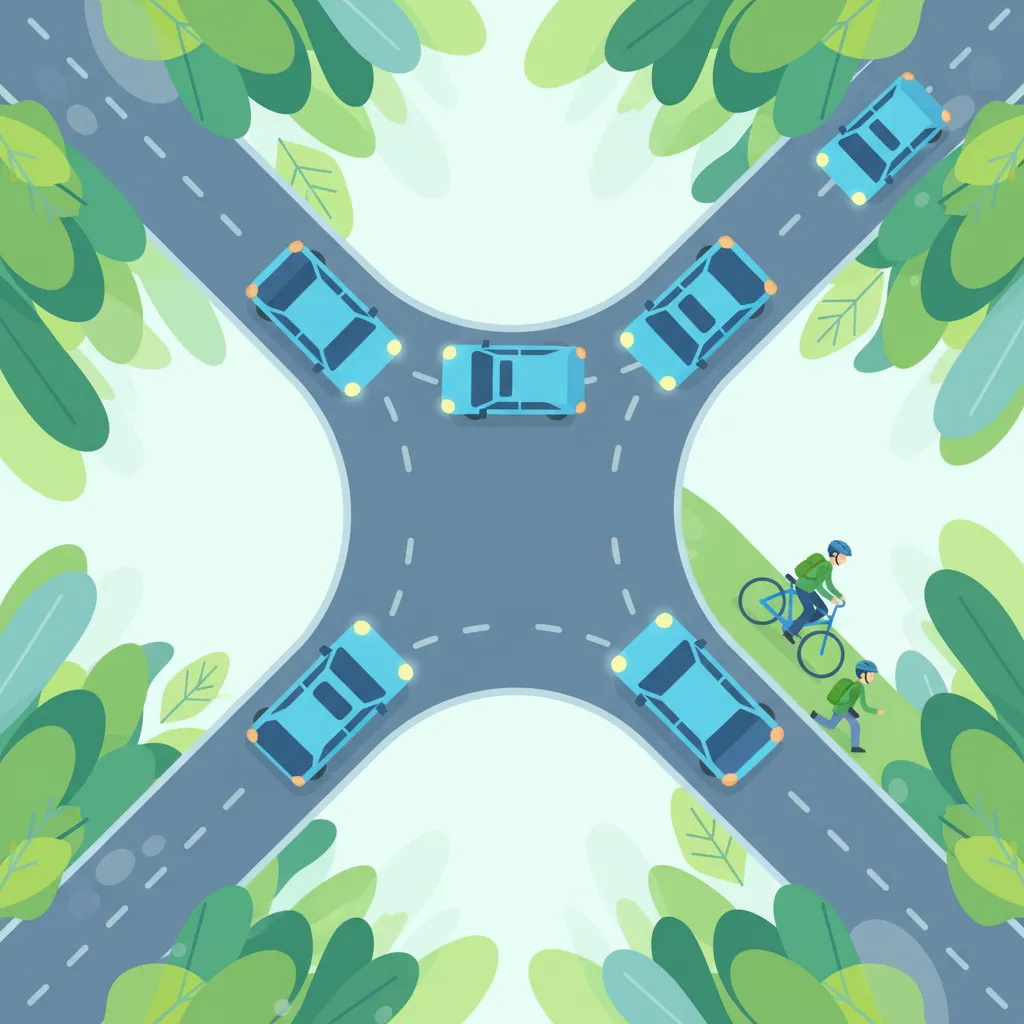Navigate Dutch intersections with confidence! This unit covers the crucial right-of-way rules (voorrang) that dictate traffic flow at junctions. You'll learn the fundamental 'priority to the right' principle, how signs like stop and yield signs alter it, and how road markings guide your decisions. Mastering these rules is vital for passing your CBR theory exam and ensuring safety on Dutch roads.

Browse all lessons that make up Right-of-Way and Priority Rules. Each lesson focuses on specific topics, learning objectives, and core concepts, helping you build essential knowledge and follow a clear, structured progression toward your study goals in the Netherlands.
Learn the crucial Dutch 'priority to the right' rule for intersections without signs, including key exceptions like trams and exiting driveways, to navigate Dutch roads safely and pass your theory exam.
Learn to identify and obey Dutch B5 yield signs, B6 stop signs, and shark teeth markings to safely navigate intersections and pass your theory test.
Learn how to navigate Dutch roundabouts by understanding priority rules, correct signaling, and the specific needs of cyclists, ensuring safe passage and exam success.
Learn the crucial exceptions to standard priority rules, focusing on emergency vehicles, trams, and processions, to pass your Dutch theory test and drive safely.
Explore high-intent keywords and long-tail search topics learners use when researching Right-of-Way and Priority Rules. These terms reflect how people search for reliable study materials, structured explanations, and unit-level theory preparation support in the Netherlands.
Find clear answers to the most common questions learners ask about Right-of-Way and Priority Rules. Understand how the unit is organized, what learning goals it supports, and how it contributes to your study progression with structured explanations and practical guidance tailored for learners in the Netherlands.
The fundamental rule in the Netherlands, at unmarked intersections where vehicles arrive simultaneously, is 'priority to the right'. This means you must give way to traffic approaching from your right. However, this rule can be overridden by traffic signs, road markings, or specific situations like those involving trams or police direction.
'Shark teeth' are triangular markings on the road pointing towards oncoming traffic. They indicate that you must give way to traffic on the main road. If you see these markings, you are on a road with lower priority and must yield to vehicles on the intersecting road before proceeding.
Yes, there are several exceptions. Priority signs (like a yield or stop sign) always take precedence over the 'priority to the right' rule. Also, traffic on a main road (often indicated by signs or road markings) generally has priority over traffic from a side road. Trams often have priority, and you must always give way to emergency vehicles with flashing lights and sirens.
In the Netherlands, at a roundabout, traffic already on the roundabout generally has priority. You must give way to vehicles already circulating when entering the roundabout. This is typically indicated by 'priority to the right' signs or 'yield' signs at the entrance, or specific roundabout signage (e.g., RVV sign D1). Always be attentive to signs and markings.
While 'autosnelweg' (motorway) and 'autoweg' (expressway) have specific speed and lane rules, their priority rules at entry and exit points are generally consistent with main road principles. The critical aspect is merging safely and yielding to traffic already on these roads, which is usually indicated by clear signage and road design.
Failing to give way correctly is considered a serious traffic violation and a common reason for failing the practical driving test. In the theory exam, questions about priority situations are frequent and crucial. Misinterpreting right-of-way rules can lead to incorrect answers and a failed exam.
All included lessons
Lessons in Right-of-Way and Priority Rules
See who benefits most from studying Right-of-Way and Priority Rules. This overview explains how the unit supports different learning needs, what level of knowledge is helpful before starting, and how it fits into the overall study path in the Netherlands.
This unit is essential for all learners preparing for the Dutch Category B driving theory test, especially those who find priority situations confusing or make mistakes during practice tests. It's also beneficial for experienced drivers who want to refresh their understanding of Dutch right-of-way regulations.

See how Dutch Driving Theory B is structured, with key topics, learning objectives, and a step-by-step path for theory preparation in the Netherlands.